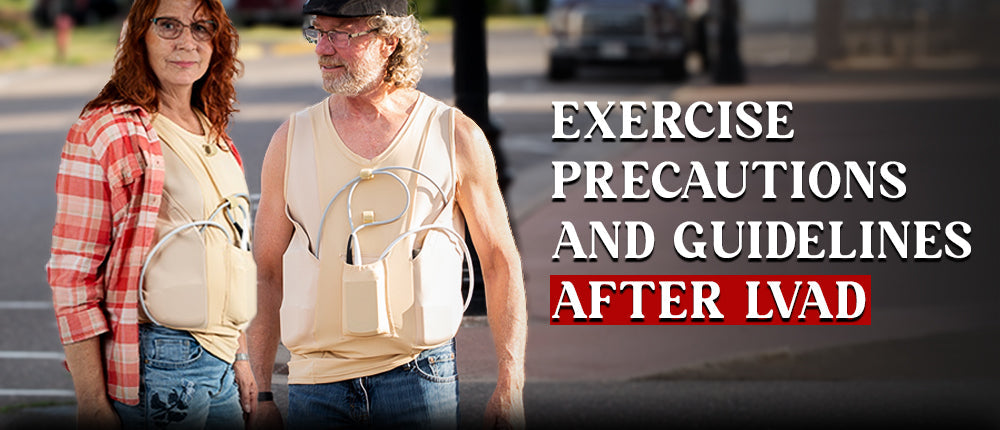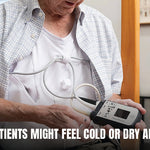
Exercise Precautions and Guidelines after LVAD
Getting an LVAD or Left Ventricular Assist Device can feel like a second chance or a life-saving option when your heart needs help. But let’s be honest: having life support is one thing, and living a quality life is something different from that. You are a person who is not just looking to survive, but you want to get back to things you used to enjoy, with confidence, and feeling more like yourself again. That is where physical activity plays a role in your recovery.
Your recovery after an LVAD starts right after an LVAD, even when you are in the ICU. You might start with some simple breathing exercises or gentle joint movements, either on your own or with a physical therapist by your side. It is all part of the bigger plan to get you stronger, step by step.
And this is also important for you to understand that there are some activity restrictions you will need to follow to protect your LVAD and prevent complications. All you need to understand is to stay at the activity level that is safe for you, and you need to gradually increase without putting your device at risk.
Let’s talk about the exercise guidelines you should follow after an LVAD implantation and the precautions so that you can still progress to recovery while minimizing the chances of complications.
LVAD Exercise Guidelines:

Exercises or physical therapy usually start right from the ICU to avoid complications. A physical therapist helps with positioning and ambulation at the start. Here are some of the guidelines to follow:
- Activity level should be increased gradually to build your strength
- First, you may get help with the exercises, but eventually you need to perform them by yourself.
- You need to be engaged in physical therapy at home after you are discharged.
- You need to connect with your doctor so that he can better guide you on what to do and what should not be done, especially in the initial phase of recovery.
- Just be careful with your LVAD controller and batteries during exercise to prevent tugging. It is better to wear proper LVAD gear, like an LVAD vest or LVAD active pack that holds and securely places the LVAD device while you move.
- Allow your incision site to properly recover.
- Everything takes time, so you need to give it some time and avoid giving yourself a hard time.
- If you feel any kind of pain, just discontinue with whatever you are doing.
- Immediately report to your doctor if you feel difficulty breathing.
LVAD Physical Therapy Protocol:

Exercise and Physical Activity with an LVAD are necessary to let you be independent in your life. You will be able to walk within two days after LVAD implantation, and from there, you will be able to do all the activities of daily living on your own. Here is the LVAD physical therapy protocol for your better understanding:
Patient Education:
Patient education is one of the most initial and important parts, as it involves understanding your LVAD, how it works, and how you will manage to care for it. The healthcare provider guides you to manage the device and learn about the alarms. When you have all the knowledge, you are less likely to panic and more likely to handle the situation thoughtfully.
Breathing exercises and Ankle pumping:
Breathing exercises are usually recommended so that there are fewer chances of infections. You may be asked to use a spirometer, where you blow and suck into the pipe to strengthen your muscles.
Ankle pumping is the technique to move the ankles to prevent blood clot formation due to immobility. Your physical therapy guides you to perform ankle movements so that blood circulates and does not cause any complications.
Ambulatory Exercises
When you are discharged from the hospital, your activity level will increase, which means you need to walk or move every joint and need to increase your stamina to engage in daily activities without fatigue. You may need to engage in an exercise program for 3 to 5 days a week, with a duration you can bear easily.
Strengthening Exercises
Strengthening muscles is essential as it will directly affect your ability to perform functional tasks. When your muscles are strong, you need less time to complete a task without pushing harder. It will ultimately increase your quality of life, and you will have peace of mind.
Endurance Training
Another important training would be your endurance training, which means you are going to be a part of the training that will increase your stamina to perform the same task with the same intensity for a longer time period.
Independent Activities of Daily Living
Functional training, where your physical therapist will allow you to engage in activities that mimic the activities of daily living. The main goal of functional training is to allow you to come back in the lifestyle that you were living before heart failure.
Important Note: The right amount of exercise training is decided by your doctor. So, it is better to engage in physical activity that is approved by your VAD doctor and physical therapist. Every patient is unique and needs an individualized exercise plan, as it is not about pushing hard but moving smart. Avoid exceeding the limit, as it can put your device and your life at risk.
What are the precautions and activity restrictions for LVAD patients?

While staying active is important, you must not engage in activities that can compromise the device’s safety. Here is what you need to know:
- Keep Device Secure: You need to protect and secure your device by wearing proper LVAD apparel to avoid tugging on the driveline or shifting of the device.
- Gradually Increase Activity: You should not directly engage in activities that put your heart at risk. The key is to gradually increase the activity level.
- No Contact Sports Activities: Sports that demand high activity levels, like football and boxing, should not be performed, as they pose the risk of damaging the driveline or the controller. It also increases the risk of internal bleeding.
- Submerging the body in Water: The LVAD controller and batteries are not waterproof, and you cannot remove the device even for a minute. It means going to swimming pools and hot tubs is not an option for you, as the water can damage the controller, and water increases the risk of infection.
- Twisting or Sudden Bending Movements: Sudden twisting and bending movements pull the driveline and may cause the pump to disconnect from the heart, which further puts your heart at risk.
- High risk of injury or falls: The activities that are associated with a risk of injury or falls are usually not recommended. Such activities may include horseback riding and skydiving.
Benefits of Exercise with an LVAD:
Exercise after an LVAD affects you in so many ways that you don’t even know about. It does not just make you able to move, but also impacts your mental health. Let’s talk about how physical activity affects LVAD patients over time:
Improves cardiac health:
Physical activity will help your heart regain its strength, especially when LVAD is used as a bridge to recovery. It helps improve circulation, reduces symptoms, and strengthens the heart muscle. You will notice a better endurance over time.
Improves mental health:
Exercise greatly improves mental issues like anxiety and fear, as it gives you a sense of accomplishment. Life after LVAD is completely changed, and your mind may find it difficult to accept. So, engaging in exercise may help you feel better and normal.
Quality of life:
After heart failure and then adapting to life with an LVAD, you may experience difficulty performing tasks as simple as just getting out of your bed, climbing stairs, or travelling with an LVAD. After LVAD, your symptoms improve, but engaging in exercises is what makes you independent, just like you were before the heart failure. Physical therapy greatly improves the quality of life of patients.
Decrease hospital admissions:
An interesting fact about being physically active after LVAD implantation is a decrease in the number of hospital admissions after discharge. It is one of the fine benefits of exercise that we cannot ignore.
Role of the right LVAD gear in your physical activity:

When you are about to participate in some physical activity, the first thing that comes to your mind is device safety. But that is not a problem anymore. LVADGear has made it easy to participate in physical activity with their premium products like the LVAD HeartMate Harness, the LVAD Activelife vest, and the LVAD Workout belt. These specifically designed products are made to hold your device safely in the pockets with added protection of hook and loop closure, and avoid device shifting while you move.
FAQs:
What should never be performed on an LVAD patient?
Never submerge your body in a swimming pool, and avoid participating in activities that can put your device at risk.
What are exercise precautions with an LVAD?
Engage in light to moderate levels of exercise and gradually increase your activity level. Limit Exercise that leads to tugging on the driveline, and always use LVAD apparel to keep your device secure.
How to sleep peacefully with an LVAD?
Sleeping on your back is the best way to sleep peacefully without putting your device at risk. However, with a proper LVAD sleeping belt or LVAD vest, you can sleep without worrying about the device.
Prev post

Why Some LVAD Patients Might Feel Cold or Dry and What It Means?
Updated on 08 August 2025
Next post

Celebrate Friendship Day with 25% off on all Essential LVAD Gear
Updated on 30 July 2025








